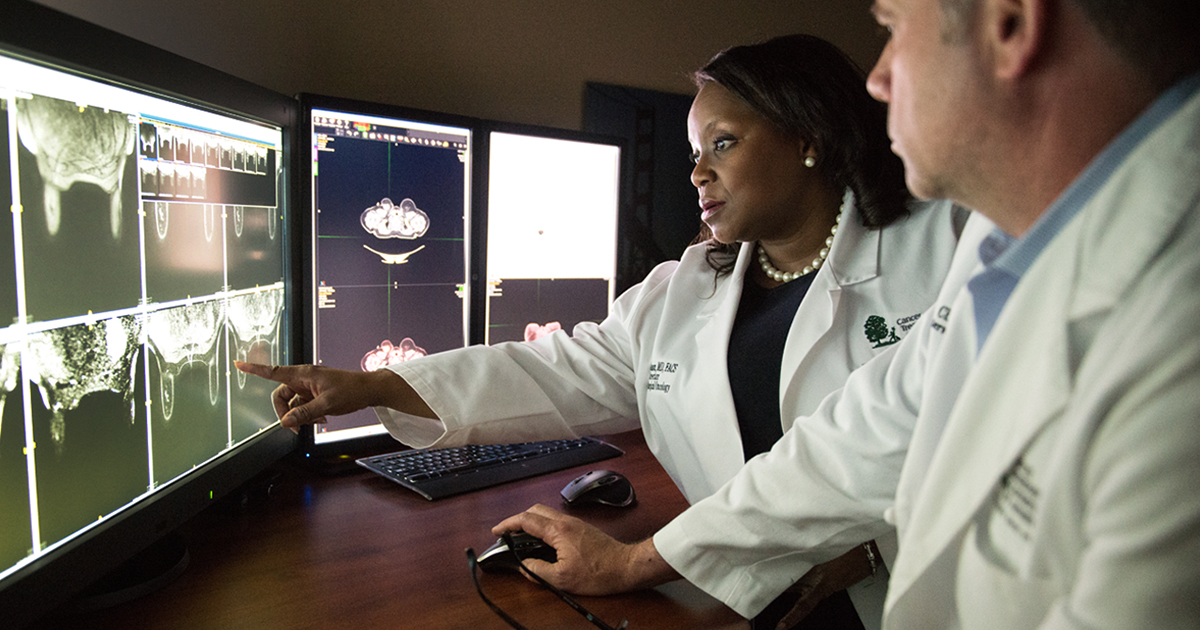
Every year, thousands of people are diagnosed with precancerous conditions, news that may induce fear and panic in those receiving it. While precancer that goes unchecked may ultimately become cancerous, it’s not a guarantee and, in many cases, isn’t even likely.
Precancer is a very treatable condition—if it even requires treatment—and no one dies from it. In some cases, a pathology report may indicate carcinoma in situ. Precancer simply means there are cells that have grown abnormally, causing their size, shape or appearance to look different than normal cells.
Whether abnormal cells become cancerous is, in many cases, uncertain. Some of the variables are known; others aren’t. So what exactly does it mean for a person to be told they have a precancerous condition? Does it increase their risk of getting cancer? Are there any prophylactic (preventative) measures that may be taken to reduce the likelihood that a cancer diagnosis is in their future?
Proliferative diseases and precancer
Experts say precancer is becoming an outdated term in breast oncology—as well as in other specialties—because the condition is more complex than a blanket term can describe.
According to research published in a 2016 study in Springerplus, the lead author says doctors may classify the condition into one of three categories: nonproliferative disease, proliferative disease without atypia and proliferative disease with atypia.
How to approach a nonproliferative disease diagnosis depends on a variety of factors. For instance, in the case of breast cancer, those factors include—but are not limited to—family history and breast density as well as personal risk factors that may be modifiable, like body mass index (BMI) and tobacco or estrogen use.
If the cumulative risk is determined to be greater than 20 percent, enhanced screenings (having both a mammogram and a breast MRI, for example) may be recommended.
Diagnoses in the proliferative disease category indicate that abnormal cells are growing faster than normal cells, but not as fast as cancer cells. An example of a proliferative disease would be an intraductal papilloma of the breast, which is like a polyp. Surgical removal of the area may be advised, depending on the patient.
Proliferative disease with atypia indicates high-risk lesions (abnormal cells) that are growing faster than normal. Depending on the cumulative risk, a form of medical treatment called antiestrogen therapy or surgery may be recommended.
What causes precancer?
Precancers develop for many reasons, and not all precancers have defined causes. That said, these factors may cause specific precancers:
Infection: Some viruses are known to cause cancer-related genetic changes in the cells they infect. For example, the human papillomavirus (HPV) causes changes in the cells of the cervix and several other areas of the body, potentially making the cells develop precancerous changes.
Inflammation: Excessive inflammation may lead to genetic changes in cells. For example, people with chronic inflammatory bowel disease, like Crohn’s disease, are at higher risk for developing colon cancer.
Exposure: UV radiation from the sun may cause precancerous lesions on the skin. Carcinogens, or cancer-causing chemicals, may cause precancerous changes to other cells. These carcinogens include tobacco smoke and chemicals that the patient may have been exposed to at work or in industrial environments.
Types of precancerous conditions
Many types of precancerous conditions exist, and each have risk factors and causes that may lead to cancers in certain organs.
Precancers are also called dysplasias, a term that means that abnormal cells have been found in the tissue. Dysplasias aren’t cancer, but may become cancer, and are graded as mild, moderate or severe depending on how abnormal the cells look compared to healthy cells.
Precancer in the skin: Dysplastic moles, also called atypical moles, are bigger than other moles, have irregular borders and may be an odd color. They may lead to melanoma. Another precancerous lesion on the skin, actinic keratosis, may lead to squamous cell skin cancer.
Precancer in the cervix: Some cells infected with HPV undergo genetic changes that make them abnormal. These precancerous cells grow in the mucus membranes of the throat, cervix, penis, anus, vagina and vulva. For example, when HPV leads to abnormal changes to cells in the cervix, the condition is called cervical dysplasia.
Precancers in the endocrine glands: Patients with multiple endocrine neoplasia (MEN) syndromes may develop precancerous conditions in the tissues of the endocrine system. These syndromes typically cause benign, precancerous and cancerous tumors in the parathyroid, thyroid, adrenal and pituitary glands, as well as tumors of the pancreas and digestive tract.
Precancer in the esophagus: Precancerous cells may develop in the esophagus and are sometimes caused by damage from stomach acids. The condition that results is called Barrett’s esophagus. Doctors monitor patients with Barrett’s esophagus to see whether their condition progresses to cancer. Patients may require treatment with medications or minimally invasive surgery.
Precancer in the colon: A colonoscopy is a test to check the colon and rectum for cancer and precancerous growths called colon polyps. Often these polyps are removed during the test and then analyzed for signs of cancer. They may show up as precancerous during testing. While not everyone will develop colon cancer, precancerous polyps indicate an elevated risk of developing colon cancer later.
Regular visits help with early diagnosis
Modern medicine allows many precancerous conditions to be discovered early. A Pap test detects cervical dysplasia (abnormal cells in the cervix), sometimes referred to as precancer. Low-grade dysplasia isn’t typically treated unless it persists for a couple of years, while high-grade dysplasia would require a biopsy. The biopsy results would dictate the next steps. A colonoscopy detects colon polyps, and skin cancer screenings by a dermatologist are credited with identifying many skin cancers that would’ve spread for removal.
If a person is diagnosed with some type of dysplasia—whether in the esophagus, colon, cervix, etc.—it doesn’t mean they will develop cancer. It does mean they’ll need some type of surveillance and treatment plan to manage it.
The takeaway is that a precancerous condition doesn’t mean a person has or will get cancer. It simply means a person has an increased risk of cancer, which should serve as a reminder for them to stay current with medical visits and screening tests, and communicate concerns or changes to their health care providers.
What is cancer? Learn more about how the disease develops and how it's treated.


